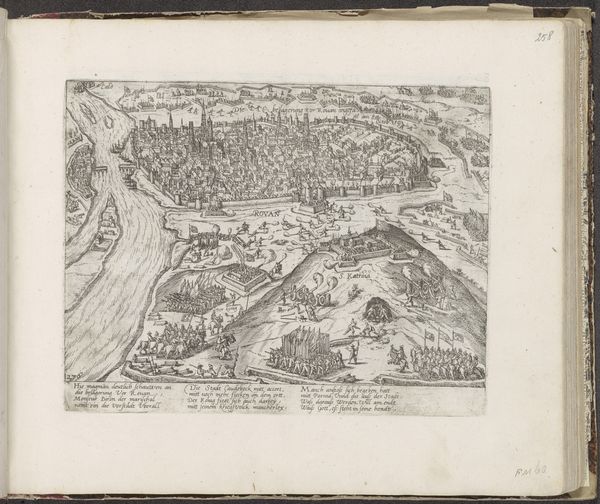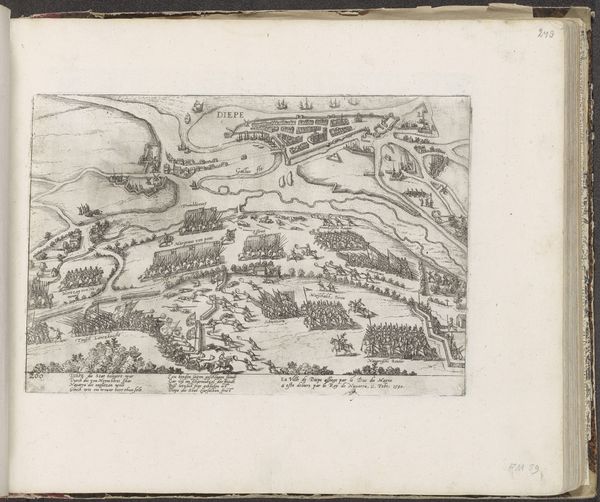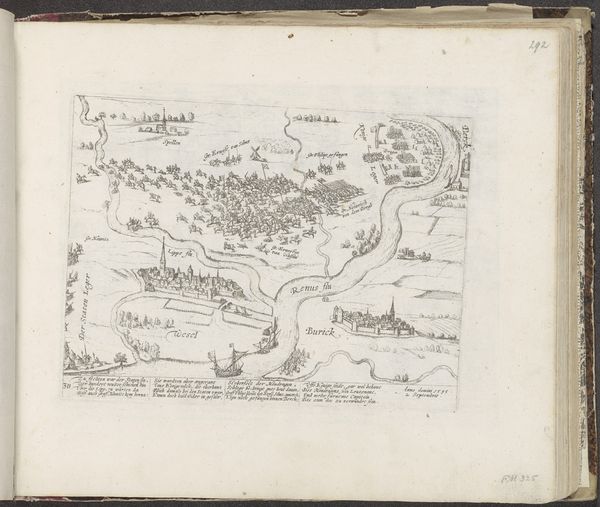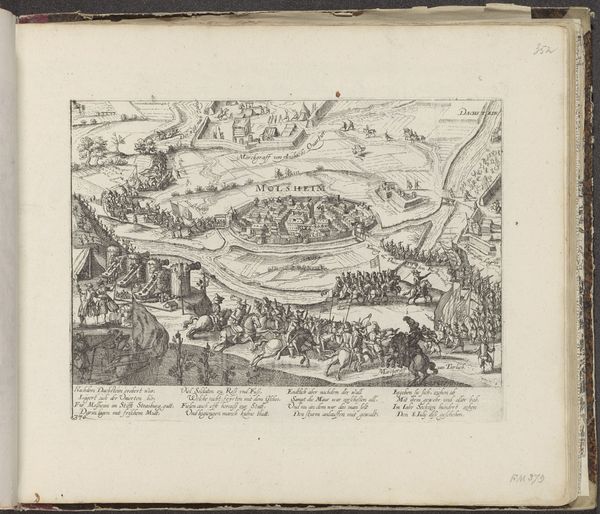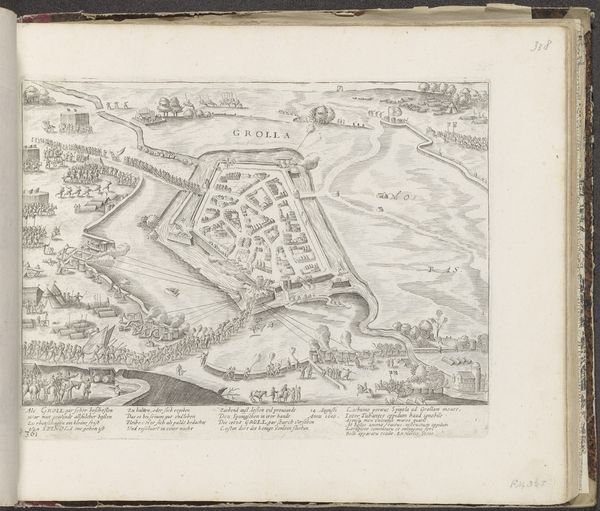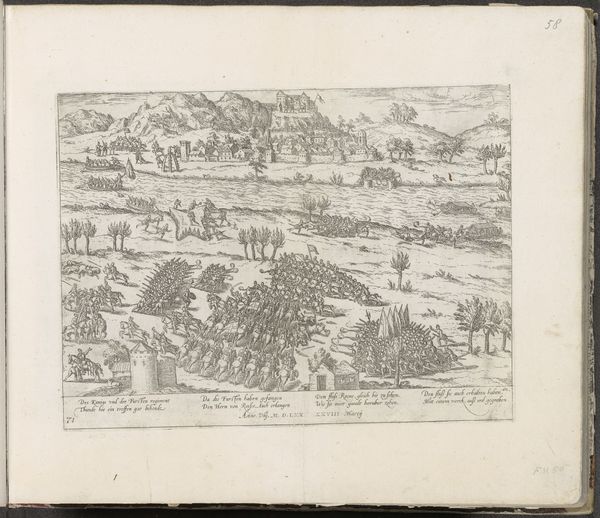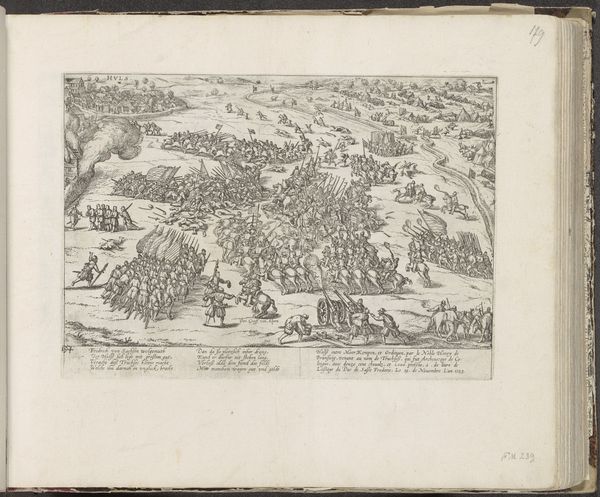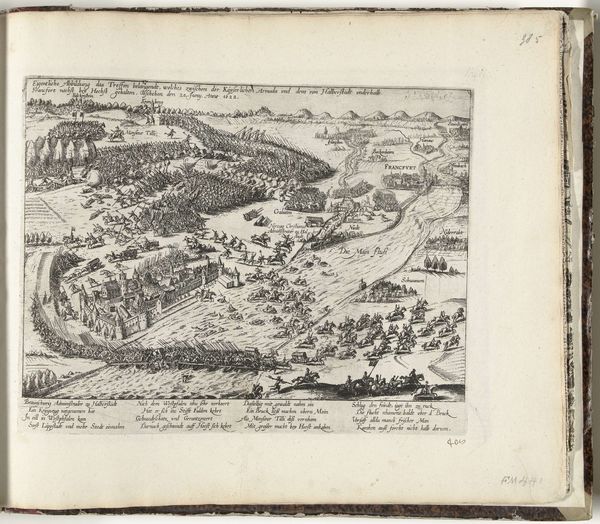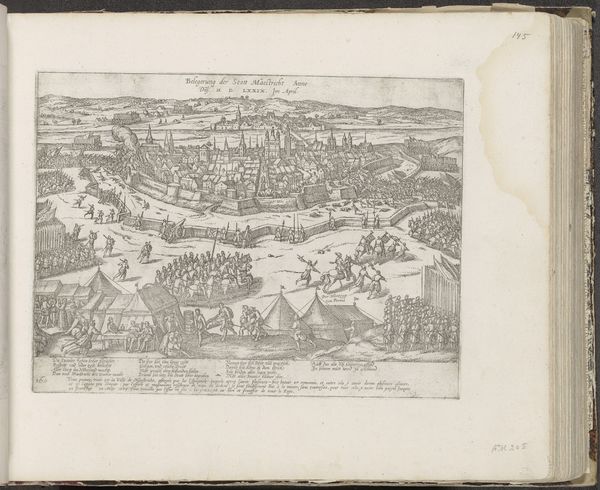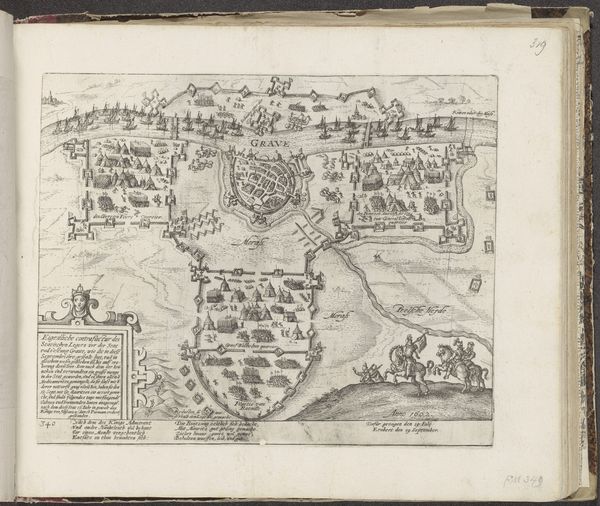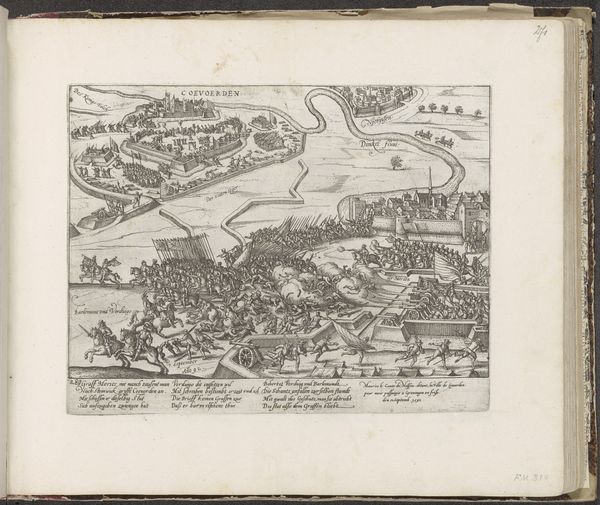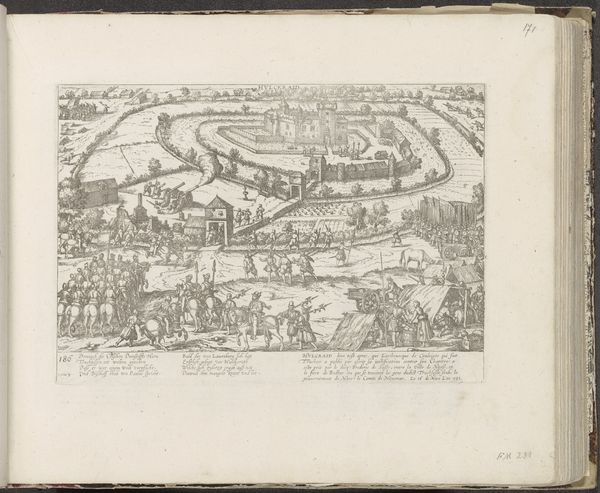
drawing, print, etching, ink, engraving
#
drawing
#
toned paper
#
pen drawing
# print
#
pen sketch
#
etching
#
sketch book
#
landscape
#
personal sketchbook
#
ink
#
ink drawing experimentation
#
pen-ink sketch
#
pen work
#
sketchbook drawing
#
cityscape
#
history-painting
#
northern-renaissance
#
sketchbook art
#
engraving
Dimensions: height 235 mm, width 325 mm
Copyright: Rijks Museum: Open Domain
Editor: Here we have "Dijken doorgestoken bij Antwerpen, 1585," a drawing by Frans Hogenberg from around 1587 to 1591. The detailed linework and depiction of the landscape have captured my attention. How do you read into a work like this? Curator: Well, first, consider the title: "The Dikes Breached Near Antwerp, 1585." This immediately signals a moment of intense political and social upheaval. Hogenberg wasn't just depicting a landscape; he was documenting an act of war, the breaching of dikes to defend Antwerp. What does that mean for the people and the land? Editor: It suggests destruction, a disruption of the natural order. The landscape is almost a casualty. Curator: Exactly. And that connects to broader narratives of power, control, and the human cost of conflict. Who benefits, and who suffers? Think about how such a strategic decision impacts the lives of ordinary people, particularly women, children, and the working class. How are their bodies and lives implicated in this cartography of conflict? Editor: I never considered the direct impact on people. This forces me to examine the cost of conflict that might otherwise be invisible. Curator: Right, and who gets to tell this story? Whose perspective is centered? Notice that the composition favors a distanced, almost objective viewpoint, minimizing the messy realities of war and displacement on the ground. What narrative does that prioritization support, and who does it silence? Editor: That makes me reconsider everything. I will definitely investigate this more closely now, with those crucial perspectives in mind. Thank you for helping me broaden my understanding of this piece. Curator: My pleasure! This has certainly clarified the importance of challenging dominant narratives, especially in how we perceive and interpret history through art.
Comments
No comments
Be the first to comment and join the conversation on the ultimate creative platform.
